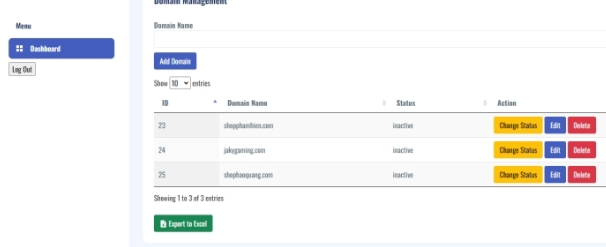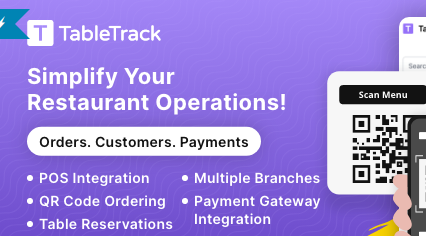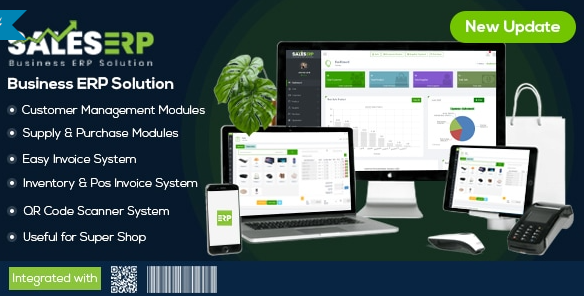
Domain management using PHP & Mysql
0 Reviews
Views
Domain Management Using PHP & MySQL: A Comprehensive Guide
Domain management plays a vital role in ensuring the smooth operation of websites and online businesses. Whether you are managing a single domain or handling multiple domains for clients, having an efficient system in place is crucial. By leveraging PHP and MySQL, developers can create a dynamic, secure, and scalable solution for domain management that meets all their needs.
In this article, we will explore how to use PHP and MySQL to build a custom domain management system. We’ll cover its features, benefits, and step-by-step processes to help you get started. This solution is suitable for individuals, developers, and businesses aiming to streamline their domain management workflows.
Key Features of a Domain Management System Built with PHP & MySQL
1. Add, Update, and Delete Domains: The system enables you to easily add new domain names to a centralized database. Each domain entry includes critical details such as the domain name, registration date, expiry date, and registrar information. You can also update or delete domains effortlessly as requirements change.
2. Expiry Date Notifications: Forgetting to renew a domain can result in downtime or even loss of ownership. With PHP and MySQL, you can implement automated reminders for upcoming domain expirations. This feature helps you stay proactive and ensures uninterrupted online services.
3. Advanced Search and Filtering Options: As the number of domains in your system grows, searching for specific domains can become cumbersome. Implement search and filter functionality to locate domains based on keywords, registration dates, expiry dates, or status (e.g., active or expired).
4. Comprehensive Domain Reporting: Generate detailed reports of your domain portfolio. These reports can include information about domain availability, renewal dates, and associated hosting details. This feature is especially useful for businesses managing domains for multiple clients.
5. User Roles and Access Control: Integrate a user authentication system to ensure that only authorized personnel can manage domains. With PHP, you can define user roles (e.g., admin, editor, viewer) and control access to specific features based on these roles.
6. Secure and Scalable Database Management: MySQL provides a reliable and scalable database solution for storing and managing domain information. By using prepared statements in PHP, you can protect your system from SQL injection attacks, ensuring data security.
Benefits of Using PHP and MySQL for Domain Management
1. Cost-Effective: PHP and MySQL are open-source technologies, making them an affordable choice for developers and businesses.
2. Flexibility: Customize your domain management system to include specific features that suit your business needs. You can expand functionality as your portfolio grows.
3. High Performance: With proper indexing and optimized queries, MySQL ensures fast and efficient data retrieval, even with large datasets.
4. Cross-Platform Compatibility: PHP and MySQL work seamlessly on various operating systems, including Windows, Linux, and macOS.
5. Strong Community Support: Both PHP and MySQL have large developer communities, making it easy to find resources, tutorials, and support.
Step-by-Step Guide to Building a Domain Management System
1. Setting Up the Environment: Start by installing PHP, MySQL, and a web server such as Apache or Nginx on your local machine or server. Use tools like XAMPP or WAMP for easy setup.
2. Designing the Database: Create a MySQL database to store domain-related information. Define tables with fields such as domain name, registrar, registration date, expiry date, and status.
3. Developing the Frontend: Use HTML forms to collect data such as domain name, registration date, and expiry date. Ensure the forms are user-friendly and validate input data before submission.
4. Writing Backend Logic: Use PHP to handle form submissions, validate input, and perform CRUD (Create, Read, Update, Delete) operations on the MySQL database. Implement prepared statements to secure your queries.
5. Implementing Notifications: Use PHP scripts to check for domains nearing expiry. You can send email notifications to administrators or users, reminding them to renew the domains in time.
6. Displaying Domain Data: Fetch domain information from the MySQL database and display it in a dynamic table. Include sorting and pagination for better usability.
7. Enhancing Security: Protect your system with authentication and authorization mechanisms. Encrypt sensitive data and use HTTPS to secure communications.
Conclusion
Domain management using PHP and MySQL is a powerful and efficient solution for individuals and businesses managing multiple domains. By building a custom system, you can automate tasks, enhance data security, and gain better control over your domain portfolio. Start building your domain management system today and experience the benefits of streamlined domain tracking and maintenance!

Review
No items found.









